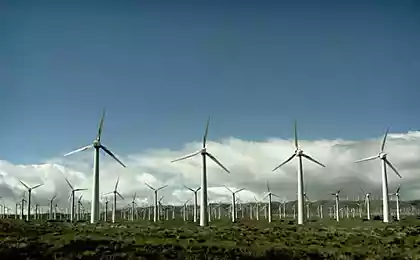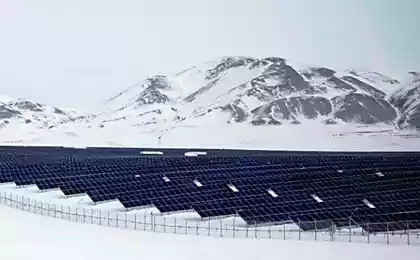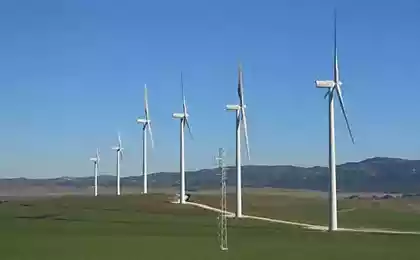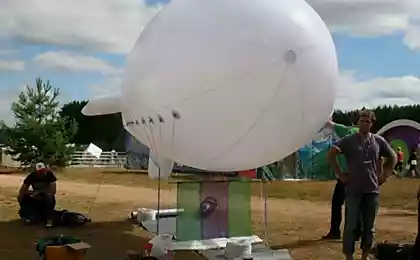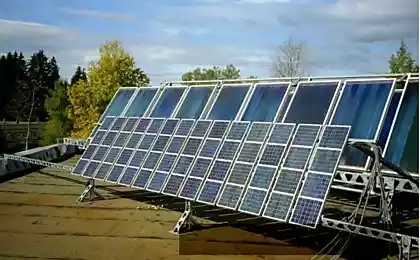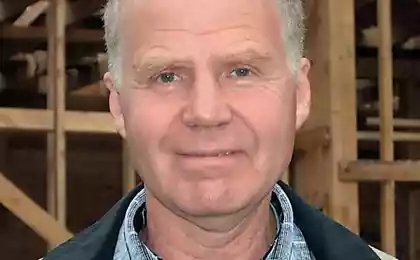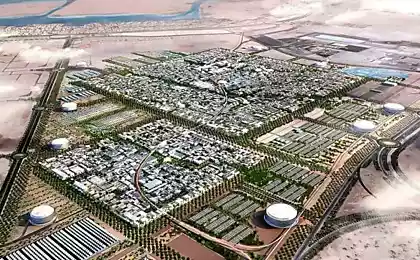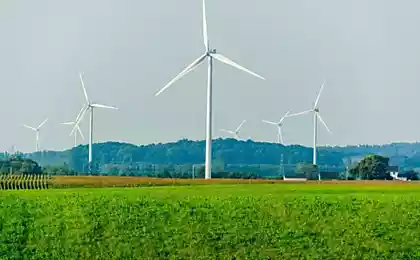822
Ekoenergetika in modern construction and architecture
The life of modern civilization is impossible without energy, mainly heat and electricity. Now 80% of energy for Russia to give fossil fuels, hydrocarbon and nuclear materials. To the West is approximately 60 %. Western scholars and economists predicted that by 2030 the use of fossil fuel energy will be reduced to an average of 40 %.
Way out for Russia from future crises — quickly and intensively to develop non-traditional alternative energy based on renewable energy (in its three fundamental parts: water, air and the rational dose of solar radiation) and on the projects of Russian inventors. Local or individual power plant should be available to each consumer (be it an owner, a farmer or company), every home should be a power generator. In this the energy crisis for all countries.
The relevance of the issue of the use of energy of buildings ecologically safe energy produced from renewable sources, has long been not even discussed. However, there is the problem of selecting the source, is it more efficient to use the energy of solar radiation, wind, soil, water, etc.? For example, wind power and hydropower, using naturally or artificially dispersed flows of air and water, are new areas of energy generation for personal use (including hidroelektrostacija and pneumoenteritis), in particular, for cities with tall buildings, farms, villages and small and large industries. What innovative solutions are proposed by the inventors in this field to date, in the period of frequent natural disasters?
In European countries, the electricity generated by renewable energy is produced through the use of wind power (mainly conventional propeller installations) and is a significant and growing share in total energy production for buildings in cities and industrial zones. Approximately the same amount of energy gets Europe and from solar panels. Such an energy supply of towns and villages spread throughout Europe, the USA, and also actively introduced in the countries of the East, such as China and India. These schemes clean energy are trying to implement in Russia but of foreign origin of the relevant power plants creates problems in the process. Wind energy development is based on propeller wind power plants (WPP) in Western samples, as well as wind farms, which work according to the scheme of centralized supply of consumers. Wind farms are also removed from the energy consumer at a considerable distance, and CHP, nuclear and hydro power, which, through the transmission lines and substations associated with the consumer. Traditional VES, in our opinion, technically and morally outdated and pose a danger to the environment and for people.
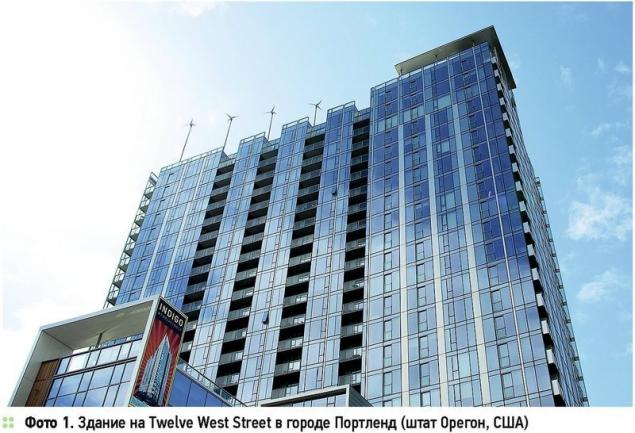
In European countries, the electricity generated by renewable energy is produced through the use of wind power, and represents a significant and growing share in total energy production for buildings in cities and industrial zones. Approximately the same amount of energy gets Europe and from solar panels. Such an energy supply of towns and villages spread throughout Europe, the USA, and is being promoted in the East
From the solar cells until there are two drawbacks: high price per kilowatt of energy produced at low efficiency; coating huge areas that are environmentally unsafe and often uneconomical.
The preference of one fuel-based energy sector, including nuclear technologies, being slightly diluted by hydropower, could lead Russia to the energy crisis (from unclaimed fuel energy), around 2020, especially if other countries prefer to develop alternative forms of energy more actively, despite high costs. In recent years, "non-fuel" part of energy is increasing dramatically (from 15 to 50 %) — and in Russia it is 0.7 %, and for five years it is planned to increase to 4.5 %, while the West will not stand still. Whatever the fuel, whatever it is, it would not have called, it still has to burn, including nuclear, that is, to disintegrate and be destroyed, to pollute and destroy the ecosphere of our planet. For ten years, the average rate of generation of energy in Europe from renewable energy sources can reach 35-40 %, at the current pace of development, but the process will certainly be accelerated with the advent of new, more effective solutions in this area, including from the Russian inventors. Already many countries plan to increase the share of energy obtained from RES to 50 % and above by 2030. Perhaps, abroad so be it, but not in Russia, as the West all you need to develop energy from renewable sources twice or three times (U.S. plans), and Russia will have to start almost from scratch.
Sevenergostroj or their own generation
The authors examine the existing scheme of power supply, came to the conclusion, that rational and efficient development of the electricity consumers (as in the city and in the countryside) under the scheme of self-generation with the development of the "centrifugal support", that is, to combine the consumer and the source of energy generation in one system of reciprocity. This scheme will allow to reduce to a minimum the need for overhead power lines and large substations, and the cities and other inhabited localities will be freed from the web of wires, reduced outages due to natural disasters and other unforeseen circumstances.
Natural disasters of recent years in the United States, Europe, the East and Russia has shown a complete failure of the scheme of centralized energy supply that is based on the "single switch", which is especially dangerous in the peripheral areas of our country and in other countries. Any technical or natural accident, leads to large financial costs. For example, American hurricane "Cindy" was for a long time de-energized areas with a population of 7 million people. Almost the same happens in Europe, Asia and of course Russia.
The best energy efficiency is the self-sufficiency of individual buildings or the whole district with electricity by the fuel-free basis, that is, on the RES, and only on three of its main components (water — in any of its manifestations, the air and the sun in rational doses). While producing energy the plants to be placed within the building: in the basement of the or basement, or on the technical floors, on roofs, or in special annexes, in the form of energy steles, pylons, or any other architectural forms. That is, groups of buildings or entire territory of the district could share the individual center of power generation to renewable energy sources and local centrifugal network — the principle of reciprocity.
Different portions of the surface of the earth, including the city's neighborhoods at different times of the year heat differently. You can only talk about the predominant seasonal wind direction and the percentage of Sunny days per year. Average speed of air flow in Russia is insignificant (about 4.5 m/s), then for six months all these Western turbines will be idle or hardly spin. But if you go up to a height of 100 m, using a suitable natural hill or tall building, almost half of the populated territory of any country, especially in cities with skyscrapers, you can put an effective wind turbines, mainly windrowing type, rationally incorporated into the architecture of buildings or the natural landscape. We are talking about low speed small wind turbines with vertical axes of rotation, not the propeller type, as is commonly now in the West, which are installed even on the roofs of buildings. Traditional wind turbines to buildings apply irrational — from hurricanes to defend them hard, the vibration will not hide, and not so much energy they produce per year.
Photo 1 shows the building of Twelve West in the us city of Portland. It primarily attracts the attention of the turbines will be located on the roof. Tenants and occupants of the multi-purpose building know that this is not the only source of renewable energy in its territory. The building is adjacent to a rapidly developing part of the city West End. By example it shows that in dense urban areas can implement eco-friendly, though ineffective project.
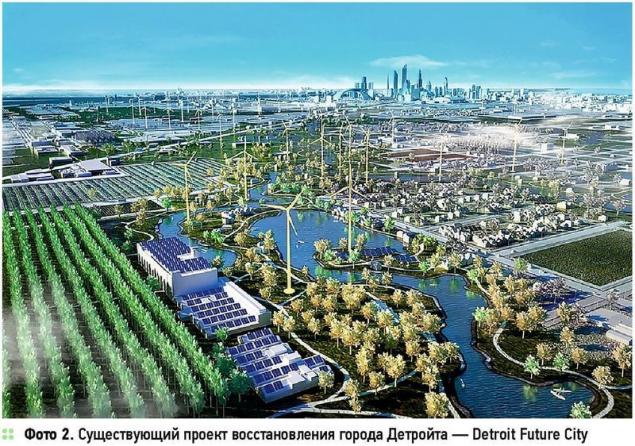
Photo 2 shows the reconstruction project of the city of Detroit: this "energy", rather, turn it into a desert. The plan is good only from the point of view of the revival of the landscape, but the placement in that number of "windmills on sticks" and thousands of hectares of solar cells would not only negate the efforts and ideas of the authors (Steven Vogel and Michael van Valkenburg), but undoing the entire territory of the future city. After running at full power all energy sources (WEC), the city, parks, gardens and fields of the agricultural products leave the insects, including bees, then birds, animals, and then seeing it all go away and people. Flora of reservoirs will deteriorate, perish and fauna. The idea is good, and the project is stillborn, and only because of "fashion", but ill-conceived variant of the supply of the city, the traditional alternative systems. It is necessary to remove the turbines, or replace them with a turbine, inscribed in the architecture of the buildings, reduced to a rational minimum of the solar cells. To bet only on unconventional hydropower new type, quietly nested in landscape design and the architecture of the buildings, including using the water and using the combined system, the type of pneumo-hydro and mechanical power reactors for individual use ("know-how" of Russian inventors, including MTC).
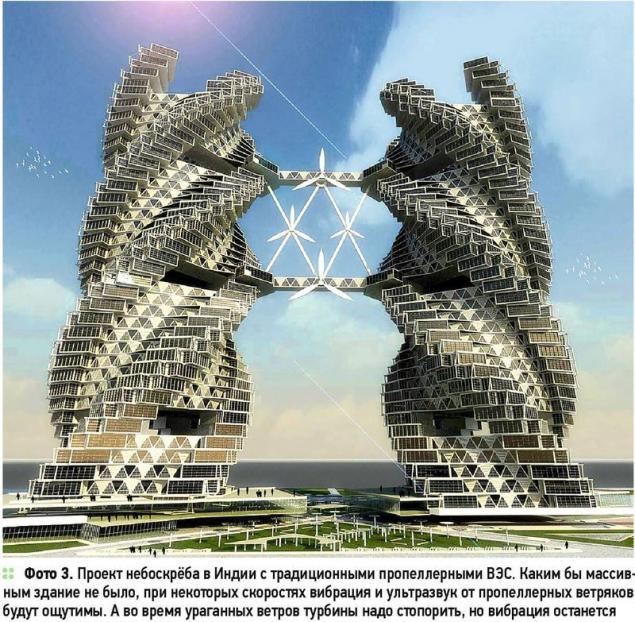
Wind energy created by the domestic energy-efficient technologies almost everywhere to use the energy of the air flow, even, it would seem that having a low energy potential. In this case, the connecting energy storage devices or other types of generators. A combination of all power plants under the "centrifugal energocascade" user can change the Economics of cities and villages. Our wind turbines can be installed for decorative architectural "excesses" of buildings, technical floors, or on raised steles and pylons. In addition, if the building has already been built, and architects do not want to change the appearance and contours of the object and embed of wind turbines and solar thermal devices, it is possible to build a free-standing stele of energy with a set of power generation for a group of buildings or to supply the whole area. The hydro rigs or pneumo-hydro-accumulating power station can fit into the architecture of low-rise buildings placed in basements or in existing reservoirs. Pneumo-hydro — generally a boon for the farm remote from Central power, as they give the opportunity to use not only the electric mechanisms and power tools, and pneumatic tools and pneumomechanic, and even pneumatic transport.
On the roofs already constructed high-rise buildings in Moscow or in other cities can be placed, in addition to the optimal number of wind turbines of the new generation without disturbing the architecture of the buildings, and even solar cells inscribed in the architecture and in the basements of the power plant is additionally a special type of hydro-Helio-pneumoelectroservice or "hydrocolloidal".
The main goal is to use any building, not just for residence or production, but also as electro-thermal station. The building must be run only the cold water pipe from the well under the building and under certain conditions, even a gas pipe. At a building under construction in the wing pylons and on the roofs can be not only elevators, stairwells, etc., but power plants, especially in the part which extends beyond the height of the building. The latter allows not only to use the wind, but also to recover the updrafts of air in the building. In the basement of the building can be placed hidroelektrostacija a new type, patented by our team. These devices are "disposed of" waste water, which is the main source of energy of the building, wind turbines and solar cells are the starting or auxiliary power generation.
We believe that it is necessary to "split" the grid for individual energy systems, the Foundation must be built on energy of a large building or two or three standing close. Then, an individual system should combine and develop on the principle of mutual support, connecting cable, but not beyond the boundaries of the metropolis.
Due to the frequent natural disasters it's time to think about antiprigarnoe architecture, especially in the settlements. Earlier it was called "bionic", that is, forms of construction must be rounded, which will improve the resistance to winds and hurricanes and reduce heat loss. But this is the future, and at the moment in places exposed to frequent and extreme exposure to the elements, it is necessary to erect protective structures type of shelter for small settlements, farms, etc., where the supply of food, water and your own energy better on fuel-free basis. This is the kind of facilities and their equipment are now working young architects, builders and energy, and in particular our staff. We develop methods for the rapid construction of streamlined buildings, such as the "wet shotcrete", the experience of which transmits young builders architect N. Kalinichenko, Builder-hydro-tech-inventor A. Yakovenko, engineer S. Miroshnichenko, consultant-technologist A. Galan and others In the West such architecture for many years already being implemented in building practice.
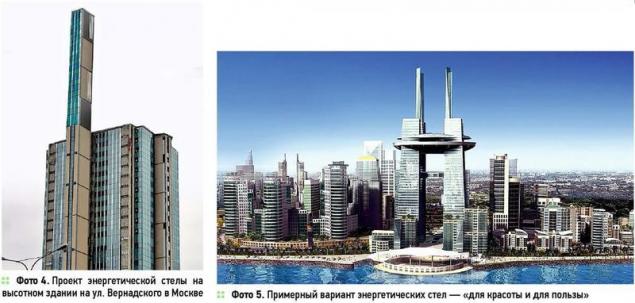
It is possible to use any building, not just for residence or production, but also as electro-thermal station. At a building under construction in the wing pylons and on the roofs can be power
No less interesting direction of small hybrid power for individual buildings (including protective anti-hurricane shelters), farms, small businesses, and military units of the MOE is based on the use of force "blast wave", that is, the so-called top-pressure recovery of pneumo-hydro, developed in MTK-"izobretatel" (patents have counterparts in the West) and allowing many consumers, especially in remote areas, independent of individual generation known species.
In addition to they can be applied to other types of self-generating energy, for example, are becoming more common mechanical oscillators, requiring no external resources. In order to implement the described solution, need an experienced landfill and money. The idea to use for the transfer of energy in village and small cities is not the wires on poles (supports), and through pneumatic conduit under the ground.
The team of MTK-"izobretatel" participated in the project of the future "Agrotechnopark" in designing the infrastructure of energy supply residential and industrial Park complex.
The authors proposed turbine with horizontal vanes on the roofs of buildings with the blowing of air from the ventilation, which is more efficient for high-rise buildings than conventional solutions. In projects, the authors have proposed the use of waste water buildings to generate power and heat as well as energy storage devices during periods of calm. Such settlements may be replicated across the country, even where weather conditions are poor.
The project is a single building proposed by the group of authors for "Agrotechnopark", includes vendramini windmill on the roof (patent obtained), about 30 m2 of solar cells, and micro-pneumo-hydro.
A real "smart" house
The concept of "smart home" in the energy context, in our view, should be wider than the traditional concept of efficiency to include not only the elements for his passivity and ability to conserve energy but also to have elements of self-generation. They must initially give the possibility of coexistence with the centralized energy supply in a certain ratio, and its energy independence. In the opinion of the authors, "smart" home energy need to survive in any natural disasters and power outage for any reason.
It would be also design and form of buildings was antiprigarnym, including the low-rise buildings. Development of young power engineers of Russia (inventors) allow you to use the rational number of generations due to their combination: that is, the energy of the sun, air (including heated upward air flow within high-rise buildings or businesses), energometsistem, for example, recycled wastewater of a high-rise building, hydro rigs on closed streams, micro-hydro to domestic savings pools and other original electrical circuits (this is the "know-how" MTC). Such innovations in small individual energy (fuel-less) will allow a return to centralized energy expended in the amount of from 30 to 100 %, depending on the sizes and architecture of buildings, factories and farms or a whole region, no matter how far from the power center they are. This applies to farms, and military units and outposts, even in the remote Islands of Primorye.
The concept of "smart home" should include not only the elements for his passivity and ability to conserve energy but also to have elements of self-generation

A new approach to energy
Energy our civilization (if we want to continue to exist or live a normal life), should use only three main renewable source is water, air and sunshine, the rest fossil fuels and nuclear energy should be a moratorium, as human habits, otherwise treatment will be more expensive. We need a moratorium on the construction of large hydropower plants flooding large areas. In the future when they are closing/liquidation they will create a huge problem.
In Fig. 1 in the center of the first circle — the energy of Russia in 2020. This is a government project. Even from the 4% of "green alternatives" (RES) really "clean energy" can be considered only 1 %, so 99 % of energy of the Russian Federation for all sorts of reasons, are and will be dangerous to humans and vulnerable to the future economy. Energy hydroelectric dams with a 19% reduced to 13 %, with 80% of them are already in disrepair. The repair may be expensive, but the increase of power will not, and will only prolong the agony of aging. The wind turbines that promise to give 4 %, the West for domestic development, the government does not pay attention. Yes, "out" setup ready to go, but already morally and technically obsolete, so the West aggressively impose them on all countries. In Russia, the inventors are now looking for the possibility of replacing the propellers on turbine transformers using existing props and equipment. Existing wind farms endure irrational, but to replace the turbine required.
The second round is the expected energy of Europe in the same year 2020. Energy from renewable sources in some countries up to 50 % and missing fuel Europe would find anywhere but in Russia. That's when American and European "sanctions" will earn at full capacity.
Analyzing the development of traditional energy and emerging unconventional in its basic components — water, air and solar energy in rational doses, we came to the conclusion (and so you can almost prove) that any country, and the whole planet can provide for themselves and their development energy on these renewable natural sources, with almost no transmission lines of great length. This refers to the creation of individual energy for the consumer, and only on Russian inventions. In fairness it should be noted that there is good development of the Western inventors.
The next two circle in the chart to explain our assumption:
1. Up to 30 % of energy can provide the use of bottom and surface currents of the seas and the flow energy of rivers, tides without dams and barriers, ranging in height from 1 m up to the natural maximum. We are talking about PSP, sea-based, using combined wind power, solar energy and waves.
2. Up to 35% of energy can provide non-standard plants that use small and the smallest of natural streams (called "low-flow") with costs of 20 l/s. Such installations already have the Russian inventors. Used springs Pro-
industrial and domestic waste water, geysers, water outlets, etc.
3. 20-30% of energy could be obtained on an artificial chutes, forced pressure in the annular and spiral trays with natural and forced dispersal of flows and hydropower plants with pressure vessels and impulse turbines (the authors have a patent on "hydrocolloidal" using the power of artificially dispersed gidroklina).
4. Up to 40-60 % of the energy you can get in standing water, including artificial or in small containers. The inventors propose a new type hydro (pneumo-hydro) and combined power plant using air and sun, and mechanical generators.
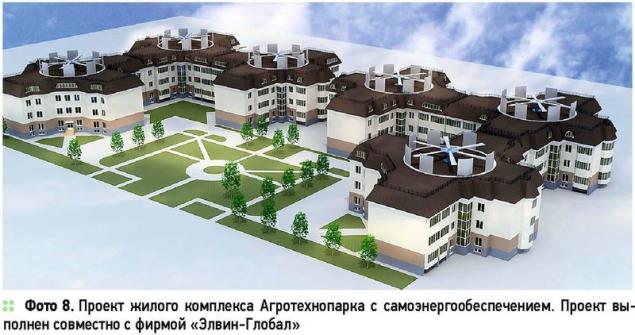
Promising developments proposed for the original hydroelectric power plant on "blast wave" — these stations can even work on ships and underwater stations. In addition, the inventors already offer power on the magnetic and gravity engines. We are confident that soon such systems will the children do in schools on the lessons of labour. Next, get the mass distribution (they already have) on the development of new principles of power — wind (hybrid turbines and transformers, able to work in two environments — water and air). Offers bottom HPP with new building technologies. All of these simple generation can give to 200 % of the energy without any fuel. Further, it is possible to use various types of syntheses, fields, energy of silicates (including sand), using the principles of Nikola Tesla and other inventors.
Only the individual energy, per capita 2 kW, can provide a normal life, to reduce prices on all goods and food, to give water and to ensure the safety of people, making them independent from any natural and other disasters. That's the kind of energy we need to invest, not drilling and peck the ground and burn everything there. The world is spending to create a modern traditional of energy a year, about $ 14 trillion. According to our calculations, to provide each person with 2 kW of energy, and considering this addition to the food basket, it only takes $ 2-3 trillion.
The transition to renewable energy sources
Dmitry Medvedev, Prime Minister of the Russian Federation: "If not to create a regulatory framework for renewable energy sources, we will be hostages of the existing models of hydrocarbon energy".
Oil age, the world has ended, said the head of Sberbank German Gref: "China, the largest consumer of hydrocarbons, rapidly develops alternative sources of energy... China in the coming years will increase the installed capacity of power plants based on renewable energy sources, to 560 gigawatts. This, for comparison, 2.5 times more than the entire installed capacity of the Russian Federation. According to experts, the transition to 100 percent of energy used from renewable sources by 2030 — the goal is more than achievable for Russia."
INFO
Back in 2008, President Barack Obama signed a Memorandum directing the Federal government to increase investment in the development of renewable energy sources in the next seven years to triple the share of renewables in the energy sector of the country. According to this document, the share of renewable energy was to increase from the current 7% to at least 10 % in 2015, 15% in 2016-2017, to 17.5% in 2018-2019, and 20 % in 2020 of the total number of resources of energy.
"The implementation of projects in the field of renewable energy sources (RES) in Russia are strong economic grounds" — such opinion in an interview with TASS was expressed by Alexey Teksler, first Deputy Minister of energy of the Russian Federation, head of the Russian delegation to the Assembly of the International Agency for renewable energies (IRENA) in Abu Dhabi. With the development of the Northern territories and the Far East renewable energy has a special meaning in many remote regions, the use of renewable energy will save energy costs since you won't need to import oil and other traditional energy sources. Today, these solutions proved its economic efficiency and expediency. "Important was the use of alternative energy in the Crimea", — said the Deputy Minister.
China is currently the world leader in cumulative wind capacity installations. But it is a propeller turbine of Western models. The authors believe that Chinese companies will soon offer us the same turbine Russian inventors...

The future and the present
Previously unseen universal energy converters based on three renewable sources — water, air and the sun is in conjunction with the "miracle" mechanics will allow in the future to completely abandon all of these nuclear power plants and cogeneration plants, hydroelectric dams, wind turbines propeller-monsters and all the other expensive and inefficient generators of energy, including any of the syntheses.
And although the "energy sources" belong to everyone equally, they do not need to produce, to recycle and where to bring — they are everywhere around us and energy on their basis, too, is cheap-just make them engineering savvy.
But here, the "dashing people" who modestly call themselves "businessmen" find reasons to increase the cost of alternative energy is comparable to the prices for fossil fuels and even raising it even higher to absolutely indecent values, creating all sorts of obstacles to its broad implementation in life because you need and more to collect the "harvest" with the benefits of owning a fossil for the rest of some 20-30 years, and there comes into force the old Russian "after us the deluge."
Previously unseen universal energy converters based on renewable sources, in conjunction with the "miracle" mechanics will allow in the future to completely abandon all nuclear, power plants, hydroelectric dams, wind turbines propeller-monsters and all the other expensive and inefficient generators of energy, including any syntheses
Prices for RES energy
"Company "Renova" group of "RUSNANO" launched in Bashkiria the first place Buribaevsky solar power. It was the first of the seven stations that "Hevel" plans to construct in Bashkiria in the coming years. Total capacity of all future solar power plants in the region will be 59 MW and the total investment is estimated at more than 6 billion rubles," — the recent media reports. That is, in 2014 prices, 1 kWh is equal to $ 3300. It is much more expensive, than in Europe, where 1 kW three years ago had cost $ 2500. The price of energy from renewable energy sources must not exceed $ 800. Turns out the rest of the costs is intended for. guess what.
The Minister of energy of the Russian Federation Alexander Novak presented the Government program of modernization of electric power industry till 2020. He noted that the funding for the program planned at the level of 11.4 trillion rubles taking into account the involvement of external funds in the amount of 3 trillion, including generating capacity is planned to direct 6.8 trillion, on electricity networks — 4.6 trillion rubles.
The goal of the program is the upgrade of Russia's power industry on the basis of domestic and global experience, overcoming growing technological backwardness, moral and physical aging of fixed assets, increasing the reliability of power supply. We believe that the amount of 6.8 trillion would be enough to provide the whole country with individual schemes of their own generation to triad RES (water, air and sun) and only developments of Russian inventors. These generations would provide the consumer for many years.
According to Mr. Nowak, "the implementation of a long-term programme "energy Efficiency and energy development" will require 28 trillion rubles from extrabudgetary sources". Yes, if you call a million inventors from Russia, to give them one million rubles, for one or three years you can collect a crop of designs and models, which the West never dreamed of, including for energy, even if the total number will be recognized as rational projects only 10-20 %. Just one trillion roubles, and the whole country can be provided energy for many years. It is particularly important that those 60 % of the country, where there is no centralized energy, there will still be 5 trillion rubles for the implementation of the remaining projects.
Sources and approaches
Water is the main source of energy in all its natural manifestations, including standing or even artificial ponds. It can provide the population with energy-and not just any city or country but the entire planet 200 % (hydroelectric dams and flooding of territories are not taken into account, it is not effective, but rather dangerous technology).
But how many other simple, reliable and inexpensive generation of energy proposed by the inventors, including young energy, to renewable energy sources. So now you can cover the energy demand of every consumer, no matter where he geographically was not (at least in the Arctic) 100% and without any fuel, including nuclear.
Technical basis of non-traditional alternative of individual power in our understanding is a monoblock power source and consumer, without any add-ons and control. How do you feel in a car or on a private boat, or plane, or with a personal telephone connection? That's right — completely independently. So it must be with power! Individual energy minimum (not less than 2 kW) need to sign a commercial cart, along with food and water.
Photo 9 shows developed in MTK-"izobretatel" project giant Ferris wheels to cities and countries, similar to the construction of "eye of Dubai" (the largest Ferris wheel in the world), but our scheme is more original, more effective and more economical as it does not require energy itself, but rather is a mechanical reactor (generator) of electricity operating in conjunction with renewables, with an approximate capacity of 2000 kW.
Such useful entertainment wheel you can put, for example, in all coastal cities — Sochi on an artificial island in the Moscow river, the Zaryadye Park, opposite the former hotel "Russia" in the future of the center "Russia" (at Domodedovo), or in the future Nagatinskaya floodplain, etc.
In the domestic media in 2015, an article was published about a new direction in providing consumers with DC power (low voltage) system "Enernet". This scheme is similar to our individual energy, we only offer private generation of different types, and "Enernet" is powered by a centralized system and uses a lot of instruments and devices for reducing voltage and saving energy. Our scheme uses only its own generation of all rational types voltage (9 V to 320 kV) — user chooses the option in accordance with the energy demand and use, and the instrumentation used; in addition, the power of energy for individual consumers is unlimited.
It is possible that better the money going to pay foreign firms for older types of windmills or acres of solar panels, to direct the creation of domestic renewable and other types of private generating companies, created according to the projects of young Russian inventors. They can be placed in the Crimea, the Kuban, the far East and along the edge of the Arctic ocean, and, of course, in Moscow, using a tall building.
How easy all Western magazines published articles on energy, but don't know anything or don't want to know about Russian developments. In our national idea should be spelled out 2 kW of power (of generation) for each person, that is the right "energy suitcase" as a complement to the food basket. In the West too, believe that 2 kW of power should be the norm for humans — the entire capacity of their countries, they are divided by the number of people and also aspire to this figure. Perhaps in the future Russia will get these standards of energy, enthusiasm, from centralized sources and from conventional plants to renewable energy sources. But it is not our merit, it will be foreign products. This is our future Russian "Enernet"...
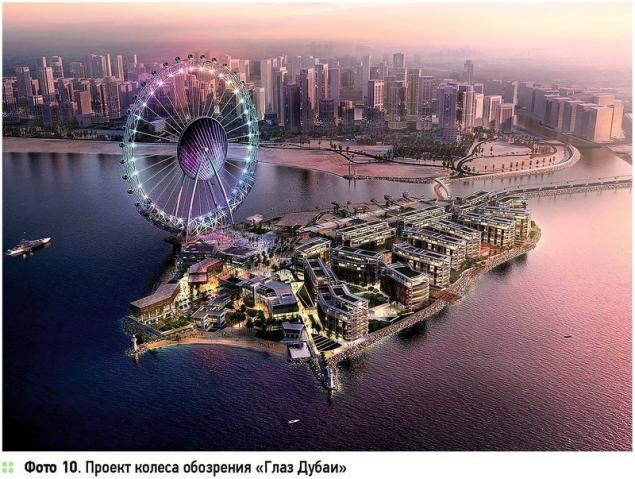
There is a proposal
It is proposed on the basis of the innovation complex in SKOLKOVO to create a youth energy cooperative, which will develop the project and implement it. The theme for the campus's own energy. For beginning (first year) is assumed to be energozameschenie centralized software to 30 %, and next year it should be 90-100 %, and the triad RES (water, air, sun), and then on other possible individual types of energy generation. For the first time at least some of the innovation centers will be independent of the circuit breaker of a centralized system. Moreover, Energocapital will allow contracts to help many consumers, especially distant, implement microanalytic in production, in farming, etc. published
Source: www.c-o-k.ru/articles/absorbcionnye-bromistolitievye-teplovye-nasosy-energosberezhenie-utilizaciya-pgu-minitec-novye-resheniya
Way out for Russia from future crises — quickly and intensively to develop non-traditional alternative energy based on renewable energy (in its three fundamental parts: water, air and the rational dose of solar radiation) and on the projects of Russian inventors. Local or individual power plant should be available to each consumer (be it an owner, a farmer or company), every home should be a power generator. In this the energy crisis for all countries.
The relevance of the issue of the use of energy of buildings ecologically safe energy produced from renewable sources, has long been not even discussed. However, there is the problem of selecting the source, is it more efficient to use the energy of solar radiation, wind, soil, water, etc.? For example, wind power and hydropower, using naturally or artificially dispersed flows of air and water, are new areas of energy generation for personal use (including hidroelektrostacija and pneumoenteritis), in particular, for cities with tall buildings, farms, villages and small and large industries. What innovative solutions are proposed by the inventors in this field to date, in the period of frequent natural disasters?
In European countries, the electricity generated by renewable energy is produced through the use of wind power (mainly conventional propeller installations) and is a significant and growing share in total energy production for buildings in cities and industrial zones. Approximately the same amount of energy gets Europe and from solar panels. Such an energy supply of towns and villages spread throughout Europe, the USA, and also actively introduced in the countries of the East, such as China and India. These schemes clean energy are trying to implement in Russia but of foreign origin of the relevant power plants creates problems in the process. Wind energy development is based on propeller wind power plants (WPP) in Western samples, as well as wind farms, which work according to the scheme of centralized supply of consumers. Wind farms are also removed from the energy consumer at a considerable distance, and CHP, nuclear and hydro power, which, through the transmission lines and substations associated with the consumer. Traditional VES, in our opinion, technically and morally outdated and pose a danger to the environment and for people.

In European countries, the electricity generated by renewable energy is produced through the use of wind power, and represents a significant and growing share in total energy production for buildings in cities and industrial zones. Approximately the same amount of energy gets Europe and from solar panels. Such an energy supply of towns and villages spread throughout Europe, the USA, and is being promoted in the East
From the solar cells until there are two drawbacks: high price per kilowatt of energy produced at low efficiency; coating huge areas that are environmentally unsafe and often uneconomical.
The preference of one fuel-based energy sector, including nuclear technologies, being slightly diluted by hydropower, could lead Russia to the energy crisis (from unclaimed fuel energy), around 2020, especially if other countries prefer to develop alternative forms of energy more actively, despite high costs. In recent years, "non-fuel" part of energy is increasing dramatically (from 15 to 50 %) — and in Russia it is 0.7 %, and for five years it is planned to increase to 4.5 %, while the West will not stand still. Whatever the fuel, whatever it is, it would not have called, it still has to burn, including nuclear, that is, to disintegrate and be destroyed, to pollute and destroy the ecosphere of our planet. For ten years, the average rate of generation of energy in Europe from renewable energy sources can reach 35-40 %, at the current pace of development, but the process will certainly be accelerated with the advent of new, more effective solutions in this area, including from the Russian inventors. Already many countries plan to increase the share of energy obtained from RES to 50 % and above by 2030. Perhaps, abroad so be it, but not in Russia, as the West all you need to develop energy from renewable sources twice or three times (U.S. plans), and Russia will have to start almost from scratch.
Sevenergostroj or their own generation
The authors examine the existing scheme of power supply, came to the conclusion, that rational and efficient development of the electricity consumers (as in the city and in the countryside) under the scheme of self-generation with the development of the "centrifugal support", that is, to combine the consumer and the source of energy generation in one system of reciprocity. This scheme will allow to reduce to a minimum the need for overhead power lines and large substations, and the cities and other inhabited localities will be freed from the web of wires, reduced outages due to natural disasters and other unforeseen circumstances.
Natural disasters of recent years in the United States, Europe, the East and Russia has shown a complete failure of the scheme of centralized energy supply that is based on the "single switch", which is especially dangerous in the peripheral areas of our country and in other countries. Any technical or natural accident, leads to large financial costs. For example, American hurricane "Cindy" was for a long time de-energized areas with a population of 7 million people. Almost the same happens in Europe, Asia and of course Russia.
The best energy efficiency is the self-sufficiency of individual buildings or the whole district with electricity by the fuel-free basis, that is, on the RES, and only on three of its main components (water — in any of its manifestations, the air and the sun in rational doses). While producing energy the plants to be placed within the building: in the basement of the or basement, or on the technical floors, on roofs, or in special annexes, in the form of energy steles, pylons, or any other architectural forms. That is, groups of buildings or entire territory of the district could share the individual center of power generation to renewable energy sources and local centrifugal network — the principle of reciprocity.
Different portions of the surface of the earth, including the city's neighborhoods at different times of the year heat differently. You can only talk about the predominant seasonal wind direction and the percentage of Sunny days per year. Average speed of air flow in Russia is insignificant (about 4.5 m/s), then for six months all these Western turbines will be idle or hardly spin. But if you go up to a height of 100 m, using a suitable natural hill or tall building, almost half of the populated territory of any country, especially in cities with skyscrapers, you can put an effective wind turbines, mainly windrowing type, rationally incorporated into the architecture of buildings or the natural landscape. We are talking about low speed small wind turbines with vertical axes of rotation, not the propeller type, as is commonly now in the West, which are installed even on the roofs of buildings. Traditional wind turbines to buildings apply irrational — from hurricanes to defend them hard, the vibration will not hide, and not so much energy they produce per year.
Photo 1 shows the building of Twelve West in the us city of Portland. It primarily attracts the attention of the turbines will be located on the roof. Tenants and occupants of the multi-purpose building know that this is not the only source of renewable energy in its territory. The building is adjacent to a rapidly developing part of the city West End. By example it shows that in dense urban areas can implement eco-friendly, though ineffective project.

Photo 2 shows the reconstruction project of the city of Detroit: this "energy", rather, turn it into a desert. The plan is good only from the point of view of the revival of the landscape, but the placement in that number of "windmills on sticks" and thousands of hectares of solar cells would not only negate the efforts and ideas of the authors (Steven Vogel and Michael van Valkenburg), but undoing the entire territory of the future city. After running at full power all energy sources (WEC), the city, parks, gardens and fields of the agricultural products leave the insects, including bees, then birds, animals, and then seeing it all go away and people. Flora of reservoirs will deteriorate, perish and fauna. The idea is good, and the project is stillborn, and only because of "fashion", but ill-conceived variant of the supply of the city, the traditional alternative systems. It is necessary to remove the turbines, or replace them with a turbine, inscribed in the architecture of the buildings, reduced to a rational minimum of the solar cells. To bet only on unconventional hydropower new type, quietly nested in landscape design and the architecture of the buildings, including using the water and using the combined system, the type of pneumo-hydro and mechanical power reactors for individual use ("know-how" of Russian inventors, including MTC).

Wind energy created by the domestic energy-efficient technologies almost everywhere to use the energy of the air flow, even, it would seem that having a low energy potential. In this case, the connecting energy storage devices or other types of generators. A combination of all power plants under the "centrifugal energocascade" user can change the Economics of cities and villages. Our wind turbines can be installed for decorative architectural "excesses" of buildings, technical floors, or on raised steles and pylons. In addition, if the building has already been built, and architects do not want to change the appearance and contours of the object and embed of wind turbines and solar thermal devices, it is possible to build a free-standing stele of energy with a set of power generation for a group of buildings or to supply the whole area. The hydro rigs or pneumo-hydro-accumulating power station can fit into the architecture of low-rise buildings placed in basements or in existing reservoirs. Pneumo-hydro — generally a boon for the farm remote from Central power, as they give the opportunity to use not only the electric mechanisms and power tools, and pneumatic tools and pneumomechanic, and even pneumatic transport.
On the roofs already constructed high-rise buildings in Moscow or in other cities can be placed, in addition to the optimal number of wind turbines of the new generation without disturbing the architecture of the buildings, and even solar cells inscribed in the architecture and in the basements of the power plant is additionally a special type of hydro-Helio-pneumoelectroservice or "hydrocolloidal".
The main goal is to use any building, not just for residence or production, but also as electro-thermal station. The building must be run only the cold water pipe from the well under the building and under certain conditions, even a gas pipe. At a building under construction in the wing pylons and on the roofs can be not only elevators, stairwells, etc., but power plants, especially in the part which extends beyond the height of the building. The latter allows not only to use the wind, but also to recover the updrafts of air in the building. In the basement of the building can be placed hidroelektrostacija a new type, patented by our team. These devices are "disposed of" waste water, which is the main source of energy of the building, wind turbines and solar cells are the starting or auxiliary power generation.
We believe that it is necessary to "split" the grid for individual energy systems, the Foundation must be built on energy of a large building or two or three standing close. Then, an individual system should combine and develop on the principle of mutual support, connecting cable, but not beyond the boundaries of the metropolis.
Due to the frequent natural disasters it's time to think about antiprigarnoe architecture, especially in the settlements. Earlier it was called "bionic", that is, forms of construction must be rounded, which will improve the resistance to winds and hurricanes and reduce heat loss. But this is the future, and at the moment in places exposed to frequent and extreme exposure to the elements, it is necessary to erect protective structures type of shelter for small settlements, farms, etc., where the supply of food, water and your own energy better on fuel-free basis. This is the kind of facilities and their equipment are now working young architects, builders and energy, and in particular our staff. We develop methods for the rapid construction of streamlined buildings, such as the "wet shotcrete", the experience of which transmits young builders architect N. Kalinichenko, Builder-hydro-tech-inventor A. Yakovenko, engineer S. Miroshnichenko, consultant-technologist A. Galan and others In the West such architecture for many years already being implemented in building practice.

It is possible to use any building, not just for residence or production, but also as electro-thermal station. At a building under construction in the wing pylons and on the roofs can be power
No less interesting direction of small hybrid power for individual buildings (including protective anti-hurricane shelters), farms, small businesses, and military units of the MOE is based on the use of force "blast wave", that is, the so-called top-pressure recovery of pneumo-hydro, developed in MTK-"izobretatel" (patents have counterparts in the West) and allowing many consumers, especially in remote areas, independent of individual generation known species.
In addition to they can be applied to other types of self-generating energy, for example, are becoming more common mechanical oscillators, requiring no external resources. In order to implement the described solution, need an experienced landfill and money. The idea to use for the transfer of energy in village and small cities is not the wires on poles (supports), and through pneumatic conduit under the ground.
The team of MTK-"izobretatel" participated in the project of the future "Agrotechnopark" in designing the infrastructure of energy supply residential and industrial Park complex.
The authors proposed turbine with horizontal vanes on the roofs of buildings with the blowing of air from the ventilation, which is more efficient for high-rise buildings than conventional solutions. In projects, the authors have proposed the use of waste water buildings to generate power and heat as well as energy storage devices during periods of calm. Such settlements may be replicated across the country, even where weather conditions are poor.
The project is a single building proposed by the group of authors for "Agrotechnopark", includes vendramini windmill on the roof (patent obtained), about 30 m2 of solar cells, and micro-pneumo-hydro.
A real "smart" house
The concept of "smart home" in the energy context, in our view, should be wider than the traditional concept of efficiency to include not only the elements for his passivity and ability to conserve energy but also to have elements of self-generation. They must initially give the possibility of coexistence with the centralized energy supply in a certain ratio, and its energy independence. In the opinion of the authors, "smart" home energy need to survive in any natural disasters and power outage for any reason.
It would be also design and form of buildings was antiprigarnym, including the low-rise buildings. Development of young power engineers of Russia (inventors) allow you to use the rational number of generations due to their combination: that is, the energy of the sun, air (including heated upward air flow within high-rise buildings or businesses), energometsistem, for example, recycled wastewater of a high-rise building, hydro rigs on closed streams, micro-hydro to domestic savings pools and other original electrical circuits (this is the "know-how" MTC). Such innovations in small individual energy (fuel-less) will allow a return to centralized energy expended in the amount of from 30 to 100 %, depending on the sizes and architecture of buildings, factories and farms or a whole region, no matter how far from the power center they are. This applies to farms, and military units and outposts, even in the remote Islands of Primorye.
The concept of "smart home" should include not only the elements for his passivity and ability to conserve energy but also to have elements of self-generation

A new approach to energy
Energy our civilization (if we want to continue to exist or live a normal life), should use only three main renewable source is water, air and sunshine, the rest fossil fuels and nuclear energy should be a moratorium, as human habits, otherwise treatment will be more expensive. We need a moratorium on the construction of large hydropower plants flooding large areas. In the future when they are closing/liquidation they will create a huge problem.
In Fig. 1 in the center of the first circle — the energy of Russia in 2020. This is a government project. Even from the 4% of "green alternatives" (RES) really "clean energy" can be considered only 1 %, so 99 % of energy of the Russian Federation for all sorts of reasons, are and will be dangerous to humans and vulnerable to the future economy. Energy hydroelectric dams with a 19% reduced to 13 %, with 80% of them are already in disrepair. The repair may be expensive, but the increase of power will not, and will only prolong the agony of aging. The wind turbines that promise to give 4 %, the West for domestic development, the government does not pay attention. Yes, "out" setup ready to go, but already morally and technically obsolete, so the West aggressively impose them on all countries. In Russia, the inventors are now looking for the possibility of replacing the propellers on turbine transformers using existing props and equipment. Existing wind farms endure irrational, but to replace the turbine required.
The second round is the expected energy of Europe in the same year 2020. Energy from renewable sources in some countries up to 50 % and missing fuel Europe would find anywhere but in Russia. That's when American and European "sanctions" will earn at full capacity.
Analyzing the development of traditional energy and emerging unconventional in its basic components — water, air and solar energy in rational doses, we came to the conclusion (and so you can almost prove) that any country, and the whole planet can provide for themselves and their development energy on these renewable natural sources, with almost no transmission lines of great length. This refers to the creation of individual energy for the consumer, and only on Russian inventions. In fairness it should be noted that there is good development of the Western inventors.
The next two circle in the chart to explain our assumption:
1. Up to 30 % of energy can provide the use of bottom and surface currents of the seas and the flow energy of rivers, tides without dams and barriers, ranging in height from 1 m up to the natural maximum. We are talking about PSP, sea-based, using combined wind power, solar energy and waves.
2. Up to 35% of energy can provide non-standard plants that use small and the smallest of natural streams (called "low-flow") with costs of 20 l/s. Such installations already have the Russian inventors. Used springs Pro-
industrial and domestic waste water, geysers, water outlets, etc.
3. 20-30% of energy could be obtained on an artificial chutes, forced pressure in the annular and spiral trays with natural and forced dispersal of flows and hydropower plants with pressure vessels and impulse turbines (the authors have a patent on "hydrocolloidal" using the power of artificially dispersed gidroklina).
4. Up to 40-60 % of the energy you can get in standing water, including artificial or in small containers. The inventors propose a new type hydro (pneumo-hydro) and combined power plant using air and sun, and mechanical generators.

Promising developments proposed for the original hydroelectric power plant on "blast wave" — these stations can even work on ships and underwater stations. In addition, the inventors already offer power on the magnetic and gravity engines. We are confident that soon such systems will the children do in schools on the lessons of labour. Next, get the mass distribution (they already have) on the development of new principles of power — wind (hybrid turbines and transformers, able to work in two environments — water and air). Offers bottom HPP with new building technologies. All of these simple generation can give to 200 % of the energy without any fuel. Further, it is possible to use various types of syntheses, fields, energy of silicates (including sand), using the principles of Nikola Tesla and other inventors.
Only the individual energy, per capita 2 kW, can provide a normal life, to reduce prices on all goods and food, to give water and to ensure the safety of people, making them independent from any natural and other disasters. That's the kind of energy we need to invest, not drilling and peck the ground and burn everything there. The world is spending to create a modern traditional of energy a year, about $ 14 trillion. According to our calculations, to provide each person with 2 kW of energy, and considering this addition to the food basket, it only takes $ 2-3 trillion.
The transition to renewable energy sources
Dmitry Medvedev, Prime Minister of the Russian Federation: "If not to create a regulatory framework for renewable energy sources, we will be hostages of the existing models of hydrocarbon energy".
Oil age, the world has ended, said the head of Sberbank German Gref: "China, the largest consumer of hydrocarbons, rapidly develops alternative sources of energy... China in the coming years will increase the installed capacity of power plants based on renewable energy sources, to 560 gigawatts. This, for comparison, 2.5 times more than the entire installed capacity of the Russian Federation. According to experts, the transition to 100 percent of energy used from renewable sources by 2030 — the goal is more than achievable for Russia."
INFO
Back in 2008, President Barack Obama signed a Memorandum directing the Federal government to increase investment in the development of renewable energy sources in the next seven years to triple the share of renewables in the energy sector of the country. According to this document, the share of renewable energy was to increase from the current 7% to at least 10 % in 2015, 15% in 2016-2017, to 17.5% in 2018-2019, and 20 % in 2020 of the total number of resources of energy.
"The implementation of projects in the field of renewable energy sources (RES) in Russia are strong economic grounds" — such opinion in an interview with TASS was expressed by Alexey Teksler, first Deputy Minister of energy of the Russian Federation, head of the Russian delegation to the Assembly of the International Agency for renewable energies (IRENA) in Abu Dhabi. With the development of the Northern territories and the Far East renewable energy has a special meaning in many remote regions, the use of renewable energy will save energy costs since you won't need to import oil and other traditional energy sources. Today, these solutions proved its economic efficiency and expediency. "Important was the use of alternative energy in the Crimea", — said the Deputy Minister.
China is currently the world leader in cumulative wind capacity installations. But it is a propeller turbine of Western models. The authors believe that Chinese companies will soon offer us the same turbine Russian inventors...

The future and the present
Previously unseen universal energy converters based on three renewable sources — water, air and the sun is in conjunction with the "miracle" mechanics will allow in the future to completely abandon all of these nuclear power plants and cogeneration plants, hydroelectric dams, wind turbines propeller-monsters and all the other expensive and inefficient generators of energy, including any of the syntheses.
And although the "energy sources" belong to everyone equally, they do not need to produce, to recycle and where to bring — they are everywhere around us and energy on their basis, too, is cheap-just make them engineering savvy.
But here, the "dashing people" who modestly call themselves "businessmen" find reasons to increase the cost of alternative energy is comparable to the prices for fossil fuels and even raising it even higher to absolutely indecent values, creating all sorts of obstacles to its broad implementation in life because you need and more to collect the "harvest" with the benefits of owning a fossil for the rest of some 20-30 years, and there comes into force the old Russian "after us the deluge."
Previously unseen universal energy converters based on renewable sources, in conjunction with the "miracle" mechanics will allow in the future to completely abandon all nuclear, power plants, hydroelectric dams, wind turbines propeller-monsters and all the other expensive and inefficient generators of energy, including any syntheses
Prices for RES energy
"Company "Renova" group of "RUSNANO" launched in Bashkiria the first place Buribaevsky solar power. It was the first of the seven stations that "Hevel" plans to construct in Bashkiria in the coming years. Total capacity of all future solar power plants in the region will be 59 MW and the total investment is estimated at more than 6 billion rubles," — the recent media reports. That is, in 2014 prices, 1 kWh is equal to $ 3300. It is much more expensive, than in Europe, where 1 kW three years ago had cost $ 2500. The price of energy from renewable energy sources must not exceed $ 800. Turns out the rest of the costs is intended for. guess what.
The Minister of energy of the Russian Federation Alexander Novak presented the Government program of modernization of electric power industry till 2020. He noted that the funding for the program planned at the level of 11.4 trillion rubles taking into account the involvement of external funds in the amount of 3 trillion, including generating capacity is planned to direct 6.8 trillion, on electricity networks — 4.6 trillion rubles.
The goal of the program is the upgrade of Russia's power industry on the basis of domestic and global experience, overcoming growing technological backwardness, moral and physical aging of fixed assets, increasing the reliability of power supply. We believe that the amount of 6.8 trillion would be enough to provide the whole country with individual schemes of their own generation to triad RES (water, air and sun) and only developments of Russian inventors. These generations would provide the consumer for many years.
According to Mr. Nowak, "the implementation of a long-term programme "energy Efficiency and energy development" will require 28 trillion rubles from extrabudgetary sources". Yes, if you call a million inventors from Russia, to give them one million rubles, for one or three years you can collect a crop of designs and models, which the West never dreamed of, including for energy, even if the total number will be recognized as rational projects only 10-20 %. Just one trillion roubles, and the whole country can be provided energy for many years. It is particularly important that those 60 % of the country, where there is no centralized energy, there will still be 5 trillion rubles for the implementation of the remaining projects.
Sources and approaches
Water is the main source of energy in all its natural manifestations, including standing or even artificial ponds. It can provide the population with energy-and not just any city or country but the entire planet 200 % (hydroelectric dams and flooding of territories are not taken into account, it is not effective, but rather dangerous technology).
But how many other simple, reliable and inexpensive generation of energy proposed by the inventors, including young energy, to renewable energy sources. So now you can cover the energy demand of every consumer, no matter where he geographically was not (at least in the Arctic) 100% and without any fuel, including nuclear.
Technical basis of non-traditional alternative of individual power in our understanding is a monoblock power source and consumer, without any add-ons and control. How do you feel in a car or on a private boat, or plane, or with a personal telephone connection? That's right — completely independently. So it must be with power! Individual energy minimum (not less than 2 kW) need to sign a commercial cart, along with food and water.
Photo 9 shows developed in MTK-"izobretatel" project giant Ferris wheels to cities and countries, similar to the construction of "eye of Dubai" (the largest Ferris wheel in the world), but our scheme is more original, more effective and more economical as it does not require energy itself, but rather is a mechanical reactor (generator) of electricity operating in conjunction with renewables, with an approximate capacity of 2000 kW.
Such useful entertainment wheel you can put, for example, in all coastal cities — Sochi on an artificial island in the Moscow river, the Zaryadye Park, opposite the former hotel "Russia" in the future of the center "Russia" (at Domodedovo), or in the future Nagatinskaya floodplain, etc.
In the domestic media in 2015, an article was published about a new direction in providing consumers with DC power (low voltage) system "Enernet". This scheme is similar to our individual energy, we only offer private generation of different types, and "Enernet" is powered by a centralized system and uses a lot of instruments and devices for reducing voltage and saving energy. Our scheme uses only its own generation of all rational types voltage (9 V to 320 kV) — user chooses the option in accordance with the energy demand and use, and the instrumentation used; in addition, the power of energy for individual consumers is unlimited.
It is possible that better the money going to pay foreign firms for older types of windmills or acres of solar panels, to direct the creation of domestic renewable and other types of private generating companies, created according to the projects of young Russian inventors. They can be placed in the Crimea, the Kuban, the far East and along the edge of the Arctic ocean, and, of course, in Moscow, using a tall building.
How easy all Western magazines published articles on energy, but don't know anything or don't want to know about Russian developments. In our national idea should be spelled out 2 kW of power (of generation) for each person, that is the right "energy suitcase" as a complement to the food basket. In the West too, believe that 2 kW of power should be the norm for humans — the entire capacity of their countries, they are divided by the number of people and also aspire to this figure. Perhaps in the future Russia will get these standards of energy, enthusiasm, from centralized sources and from conventional plants to renewable energy sources. But it is not our merit, it will be foreign products. This is our future Russian "Enernet"...

There is a proposal
It is proposed on the basis of the innovation complex in SKOLKOVO to create a youth energy cooperative, which will develop the project and implement it. The theme for the campus's own energy. For beginning (first year) is assumed to be energozameschenie centralized software to 30 %, and next year it should be 90-100 %, and the triad RES (water, air, sun), and then on other possible individual types of energy generation. For the first time at least some of the innovation centers will be independent of the circuit breaker of a centralized system. Moreover, Energocapital will allow contracts to help many consumers, especially distant, implement microanalytic in production, in farming, etc. published
Source: www.c-o-k.ru/articles/absorbcionnye-bromistolitievye-teplovye-nasosy-energosberezhenie-utilizaciya-pgu-minitec-novye-resheniya
Heat pumps: usage statistics in Europe and the world
Lighting automation of land in the village or the first step towards a smart home

